 Your new post is loading...
 Your new post is loading...
Por Amalio ReyTrabajo donde vivo y sé bien los riesgos que tiene eso. También, las ventajas. Si fuera más joven no lo haría pero, ahora, con mis caprichos viejunos, me cuesta encontrar un sitio en el que me sienta (y me concentre) mejor que en mi despacho de casa.Los que trabajamos así sabemos que ese es el escenario menos propicio para separar la vida personal y laboral pero, visto lo visto, no hace falta trabajar en casa para caer en el error de mezclarlos. Quiero escribir de eso pero sin ánimo de dar lecciones porque es algo que yo no tengo resuelto todavía. Solo quiero explicar por qué creo que el tiempo de ocio, de descanso, o como llamen a esas horas de no-trabajo, hay que blindarlo con plomo para que el modo profesional no termine engulléndolo todo.A decir verdad, siempre desconfié de la idea, tan asociada a los knowmads, de que había que dejar que se mezclara con naturalidad el trabajo con el resto de la vida, porque es una tendencia de la vida moderna contra la que no conviene oponer resistencia. Recuerdo que hace casi 10 años, cuando un grupo de amigo/as consultores/as discutíamos los detalles del texto que terminó siendo la Declaración de Consultoría Artesana, nunca me sentí cómodo, y lo expresé, con un párrafo que se propuso incluir en aquel documento, que asociaba la idea cierta de que “nos gusta nuestro trabajo” con “no establecer rígidas separaciones entre nuestra labor de consultoría y otras facetas de nuestra vida” para así “integrar nuestro trabajo como una actividad más de nuestro quehacer cotidiano”.
Via Juan Carlos Valda
El Tribunal Supremo (TS) ha dado la razón al comité de empresa de una compañía de Barcelona que eliminó la subvención de comida a sus trabajadores cuando...
Via Santiago Sanz Lastra
Cuando por fin decidí tomar el control de lo que hacía, uno de los primeros cambios que hice fue ponerme en serio a preparar mejor la semana siguiente. ¡Pero enseguida fallé! Me costaba hacerlo, olvidaba detalles, me atascaba… Hasta que preparé mi propio guion para no perderme. Y no tengo duda: esa sencilla «checklist» jugó […]
Via Ramon Aragon
It's crucial to understand new trends, especially how powerful AI can be in changing things. This will help us be flexible and adjust as the world keeps evolving.
Via James Schreier
por Leonardo J. Glikin
Todas las firmas -sean de familia, de socios o de propietarios únicos- necesitan organizar la salida de los fundadores. Las claves para que sea exitosa.- Estar guardado en casa por la cuarentena me demostró que no soy imprescindible, y que mis hijas ya están maduras para quedar al frente – cuenta Horacio, fundador de una firma de comercio exterior, con 50% de orgullo y 50% de resignación.- Yo no me banco otra crisis - dice Edgardo en su constructora- Apenas la cosa se normalice, buscaré un comprador para la empresa.- El tiempo pasa, pero nosotros seguimos a cargo de todo - se quejan Adriana y Rafael, la pareja creadora de una exitosa cadena de indumentaria.Los tres casos tienen algo en común: ninguno quiere morir con las botas puestas.
Via Juan Carlos Valda
Gokul Rajaram, que se define en LinkedIn como una persona que ayuda a empresas, ha comentado en Twitter (ahora que se pueden hacer textos muy largos) la...
Via Santiago Sanz Lastra
By downloading this you confirm that you are automatically subscribed to my weekly newsletter. We respect your privacy. Unsubscribe at any time.
One of the toughest situations you can face as a new manager is having a direct report who holds negative feelings towards you. Here are ways to manage the situation. Think and reflect: The problem isn’t always the other person. It could just as likely be you, your management style, or a bias you hold that you are unaware of and is reflected in how you engage with this employee or how they engage with you. Hit refresh: Once you’ve had a chance to reflect and check your own biases, it’s time to focus on what you can do to manage the situation – whether the problem lies with you, your employee, or both in equal measure. Start with having an honest and open conversation. You can use the GROW coaching framework to level up and openly air your challenges in working with them and hear their side of the story. Continue your efforts: Having one conversation is like scratching the surface. It’s not going to be that magic pill; you will need to make concerted efforts to form a foundation of trust with this person. Unless your employee trusts you and is convinced you have their back, they will not change the way they feel about you.
Many of us stick to familiar tools and routines when making instructional materials. We often use tools like slide decks for presentations and word documents for worksheets, just as they’re intended.
Via Nik Peachey
Aviso navegantes esta entrada donde vamos a intentar hablar sobre la “Inteligencia Artificial y el Futuro del Trabajo en las Organizaciones: Desafíos y Oportunidades”, es una entrada larga, compuesta de 4 partes, que iremos descubriendo a lo largo de los próximos meses, de momento el mes pasado descubrimos la primera parte, pero vamos a ver…
ChatGPT llegó hace más de un año trayendo una revolución y seguida por otras herramientas similares de inteligencia artificial (IA). Todas ellas llegan con...
Via Santiago Sanz Lastra
The recent sustained slowdown in growth has been compounded by a succession of crises and dislocations. These crises have raised questions not just about the stability of prevailing approaches to stimulating economic growth, but about the goals and values underpinning it.
It is now more than 15 years since the beginning of the global financial crisis, but it continues to cast a shadow, not least in the policy choices of many advanced economies. The COVID-19 pandemic and the shock of lockdowns, left behind an aftermath of a surge in public debt levels and reversal of global development progress. Geopolitical tensions and conflicts have further reshaped an increasingly multipolar international order, with far-reaching implications for technology, growth and development.
Overshadowing these developments is the growing awareness that the world’s rising temperature poses grave dangers to the
long-term prospects for humanity, with the world currently on track for a temperature rise significantly above the targets set out in the Paris Agreement in 2015. In parallel, polarization and mistrust is growing in many societies, with only 50% of people trusting governments and only 41% trusting government leaders.
All of this has taken place against – and has also frequently contributed to – a backdrop of increasing global contention over economic policies, norms and structures. The extent to which there was previously agreement on these matters should not be overstated, with older prescriptions for growth, including the so-called “Washington consensus”, having broken down before the global financial crisis had erupted.
But the forces of change have intensified over the past two decades, in particular as politics in many advanced economies have fractured, as the power and resources of emerging economies have increased, and as many leaders across the world have sought to strengthen national economic policy-making as a counterweight to the political and economic effects of globalization.
The work in this report starts from two key premises. The first is that economic growth is an essential policy objective and a key prerequisite for improving living standards and making progress on almost any other policy agenda. The second is that growth policy is an inherently normative exercise, with tradeoffs and synergies. As such, there will inevitably be disagreements on these normative considerations.
Via Edumorfosis
El aprendizaje es una herramienta importante en la vida cotidiana, pues no solo nos ayuda a tomar mejores decisiones, sino que nos dota de la posibilidad de desarrolla nuevas habilidades y al mismo tiempo de prepararnos para los diferentes retos que la vida laboral y personal nos propone.Aprender, de alguna manera, representa la posibilidad de abrirnos el camino y amplia nuestro panorama frente a muchas circunstancias en cualquier ámbito de nuestra vida.De ahí la importancia que de el aprendizaje sea continuo, es decir, que constantemente estemos aprendiendo nuevas cosas, especialmente si de nuestro ámbito de acción se refiere.Especializarnos en un tema nos puede llegar a dar cierto grado de autoridad en el mismo.
Via Juan Carlos Valda
|
Lots of “stuff” can cause frustration. But only if we let it. People can frustrate us too. But only if we allow them to. Frustration is a natural reaction to circumstances when we believe those circumstances to be beyond our control. But to some extent being frustrated really is a choice. We can allow frustrating…
Via James Schreier
"La gestión de organizaciones y el ejercicio del liderazgo es una disciplina fascinante"
Via Santiago Bonet
The 2024 Index is our most comprehensive to date and arrives at an important moment when AI’s influence on society has never been more pronounced. This year, we have broadened our scope to more extensively cover essential trends such as technical advancements in AI, public perceptions of the technology, and the geopolitical dynamics surrounding its development. Featuring more original data than ever before, this edition introduces new estimates on AI training costs, detailed analyses of the responsible AI landscape, and an entirely new chapter dedicated to AI’s impact on science and medicine.
The AI Index report tracks, collates, distills, and visualizes data related to artificial intelligence (AI). Our mission is to provide unbiased, rigorously vetted, broadly sourced data in order for policymakers, researchers, executives, journalists, and the general public to develop a more thorough and nuanced understanding of the complex field of AI.
Via Edumorfosis
En un mundo donde la primera impresión puede definir el futuro de nuestras relaciones profesionales y personales, la habilidad de comunicarse efectivamente se convierte en una herramienta esencial. No es solo lo que decimos, sino cómo lo decimos lo que puede marcar la diferencia entre destacarnos o pasar desapercibidos. La comunicación eficaz es el pilar sobre el cual se construye una marca personal fuerte y reconocible. Esta no solo refleja nuestra identidad y valores, sino que también establece la percepción de confiabilidad y competencia ante los demás.
Via Edumorfosis
Dear Madeleine, I am a marketing director for a medical devices company. I manage all our social media and speaking engagements, which involves a lot of details and spreadsheets with tasks and tracking results. Part of my job is to conduct interviews with experts and write them up for our website, and to write articles…
Via James Schreier
Una infografía con las claves para la gestión del estrés.
Via Ramon Aragon
In Team Anywhere #170, we delve into the strategies and trainings essential for thriving in hybrid work environments with Mitch & Brett.
The key to writing a resume that will stand out to recruiters is to customize it for the specific job you're applying for. Here's how to do it.
Via James Schreier
Welcome to the seventh edition of the AI Index Report. The 2024 Index is our most comprehensive to date and arrives at an important moment when AI’s influence on society has never been more pronounced. This year, we have broadened our scope to more extensively cover essential trends such as technical advancements in AI, public perceptions of the technology, and the geopolitical dynamics surrounding its development. Featuring more original data than ever before, this edition introduces new estimates on AI training costs, detailed analyses of the responsible AI landscape, and an entirely new chapter dedicated to AI’s impact on science and medicine.
The AI Index Report tracks, collates, distills, and visualizes data related to AI. Our mission is to provide unbiased, rigorously vetted, broadly sourced data in order for policymakers, researchers, executives, journalists, and the general public to develop a more thorough and nuanced understanding of the complex field of AI.
Via Edumorfosis
Does your resume pass the 6-second scan test? Here's why it's important for your resume to be scannable and easy t
Via James Schreier
Scientifically, this biological preference is called your chronotype, and it can have a significant impact on your productivity throughout the day. For example, while early birds might benefit from an 8 a.m. start, night owls tend to work better later at night. Unfortunately, the rigid schedule of many office jobs means that all chronotypes are forced to adhere to the same schedule, which can be detrimental for our overall productivity.
Via James Schreier
The inflated ego that comes with success – the bigger salary, the nicer office, the easy laughs – often makes us feel as if we’ve found the eternal answer to being a leader. But the reality is, we haven’t. An inflated ego makes us susceptible to manipulation; it narrows our field of vision; and it corrupts our behavior, often causing us to act against our values. Breaking free of an overly-protective or inflated ego and avoiding the leadership bubble is an important and challenging job that requires selflessness, reflection, and courage.
|



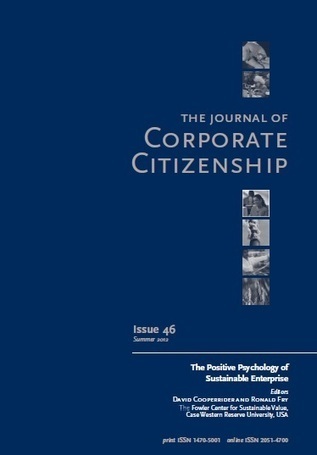


 Your new post is loading...
Your new post is loading...





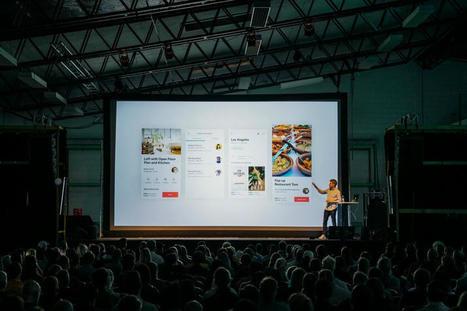





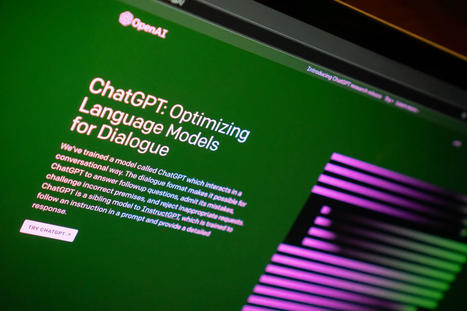
![[PDF] The Future of Growth Report 2024 | #HR #RRHH Making love and making personal #branding #leadership | Scoop.it](https://img.scoop.it/MpGs0gkUL51cQxevcExmIzl72eJkfbmt4t8yenImKBVvK0kTmF0xjctABnaLJIm9)

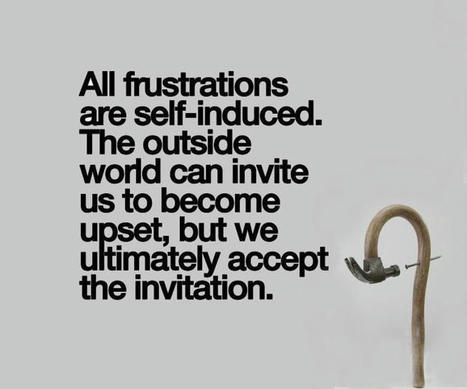
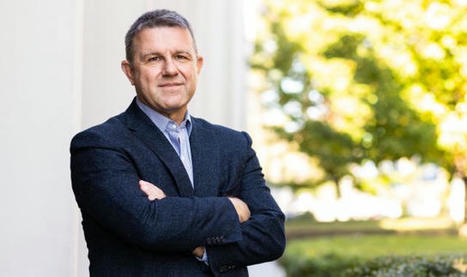

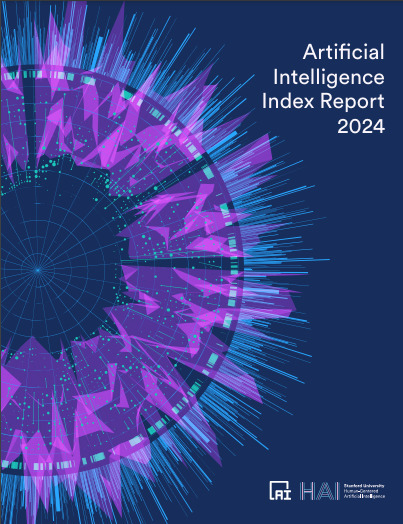



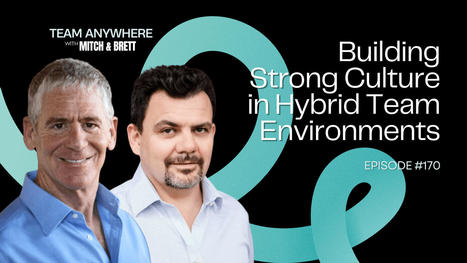

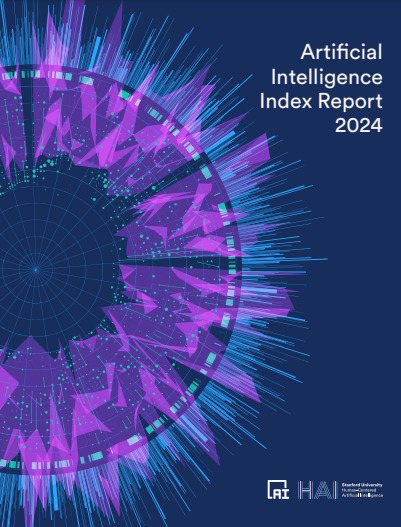







Introduction to the Special Issue:
Mirror Flourishing and
The Positive Psychology of Sustainability+
by David Cooperrider and Ronald Fry
“We do not act rightly because we have virtue or excellence, but we rather have those because we have acted rightly. We are what we repeatedly do. Excellence, then, is not an act but a habit.”
--Aristotle
In a world where just about every corporation is going greener and more socially responsible, and where many have found that building a better world and building a stronger business indeed go hand in hand, it is time for scholars and managers alike to explore the impact of sustainability action on the workforce and people, that is, to study exactly how the quest for sustainable value affects the human side of enterprise. If as Aristotle observed, we are what we repeatedly do—and if much if not most of our waking lives is spent in the context of organizations—then what happens to us when we are engaged in organizations that are leading and breaking the sustainability barrier?
Company “A” is seen as an industry laggard, that is, a sincere commitment to sustainability is nowhere to be found in the organization’s strategies, priorities, supply chain commitments, culture, or operational realities—and the world knows it. Company “B” on the other hand is increasingly recognized as an industry-wide model, where the sustainable value lens is not a “bolt on” but is deeply embedded and has propelled new sources of innovation and entrepreneurship. Now ask yourself: will there be a difference in these two organizations, on the inside of the enterprise, in terms of the human dimension?
Which organization will bring out the best in people? And more importantly in terms of nuance and reality, why and how, and under what conditions?
This special issue of the JCC, co-edited by David Cooperrider and Ron Fry, explores the proposition that the quest for sustainability is the most signficant human development opportunity of the 21st century—and that when people learn about and work toward building a sustainable world they too are poised to flourish in ways that elevate innovation, personal excellence, and workplace well being. Put another way, corporate citizenship is not only about serving or satisfying external stakeholders, it is also core to individual flourishing inside the firm.
Sustainable value creation and shared well-being might well reinforce and work both ways and thereby raises a far reaching exploration: what is the link between advancing sustainability for a flourishing Earth, with the flourishing of the human side of enterprise? And how might new scholarship on the positive psychology of human strengths shed light on this important but under-researched dynamic? How, precisely, might an organization’s quest for sustainable value bring out the best not just on the outside—helping to advance a better society or world—but also bring out the best on the “inside”-- in the flourishing of people, the quality of their relationships, their health and well-being, their motivation and performance, and their capacity for growth, resilience, and positive change?
A Time for Interdisciplinary Bridge Building
Three things propelled the vision for this special issue.
First, the real world of business is where it is happening. For over thirty years the two of us have been active in the applied side of organization change theory, helping to guide strategic planning and major organization development initiatives in organizations such as National Grid, Apple, Sherwin Williams, Fairmount Minerals, Wal Mart, and the UN Global Compact including companies such as Novo Nordisk, Telefonica, and Royal Dutch Shell (Cooperrider and Fry, 2010.)
Obviously, in these thirty years in the field of management, we have seen many developments: the birth of the worldwide web; re-engineering of the corporation; participative management; the quality revolution; and many more. Because of our social science background we’ve had a keen interest in how each particular management innovation affected the human factor—things like inspiration and hope, engagement, entrepreneurship and innovation, and collaborative capacity. And herein lies our number one observation from the real world that has been most striking: there is nothing that brings out the best in human enterprise faster, more consistently, or powerfully than calling the whole organization to design sustainability solutions to humanity’s greatest challenges. Indeed, we’ve completed more than 2,500 grounded theory interviews into “business as an agent of world benefit” and have helped lead over one hundred sustainability initiatives via our Appreciative Inquiry large group summit methodology (Cooperrider, 2012; Ludema, et al. 2003.) And in all of this, one essential observation is palpable: the human factor comes most alive when, in the words of Fairmount Minerals CEO Chuck Fowler, the call is, “to do good, do well.”
But beyond broad assertions or a myriad arrary of anecdotes of industry leading stars like Chuck Fowler’s Fairmount Minerals (its a company that was named top corporate citizen in the United States by the Chamber of Commerce in 2005 and is being featured over and over for its high performance in magazines such as Leadership Excellence (see Cooperrider and Lazslo, 2012)--how are we to more deeply and in a more nuanced manner understand the dynamic? Under what conditions does the call to sustainability elevate, magnify and refract the best in human beings?
Fortunately there is a field that is asking the fundamental questions related to the study of the best in human life, and a bridge between this rapidly growing science and the domain of corporate citizenship is poised and ready to be forged. This was the second, and more academic reason for this volume: to bring the fundamental questions, findings, and constructs, of the burgeoning field of positive psychology into juxtaposition with the field of corporate citizenship and its future agenda.
Positive Psychology is the scientific study of the good life—what is it, where is it happening, and what nurtures it-- including the strengths and systems that enable individuals and communities to thrive. The field is founded on the belief that people want to lead meaningful and fulfilling lives, to cultivate what is best within themselves and others, and to enhance their experiences of love, work, and play. Positive Psychology, at the founding stages, set forward three central pillars of concern: the study of positive emotions, the identification of positive individual traits or strengths, and the discovery and design of positive institutions (Seligman and Csikszentmihalyi 2000). Understanding positive emotions entails the study of contentment with the past, flourishing in the present, and hope and optimism for the future (Fredrickson, 2003). Understanding positive individual traits consists of the cataloguing and study of our highest human strengths and virtues, such as the capacity for love, courage, ethical compassion, resilience, creativity, curiosity, integrity, self-knowledge, justice, spirituality, and wisdom (Peterson and Seligman, 2008). Understanding positive institutions entails the study of how organizations and communities themselves can become vehicles for the elevation, magnification, and refraction of our highest human strengths beyond the organization and out into the world (Cooperrider and Godwin, 2011.)
In their article christening the new focus on the scientific study of the best in life Seligman and Csikszentmihalyi (2000, p.7) suggested that over 80% of human science research had been on human deficit—pathology, what’s wrong with the human being, anger, fear, weakness, depression, damage and the like. And while psychology has in fact made great strides in the treatment of suffering and damage, there has been a cost because it became consumed with a single topic—mental illness—and in some ways it has done fairly well with it. “But this progress has come at a high cost” writes Martin Seligman (2002, p. ix): “Relieving the states that make life miserable, it seems, has made building the states that make life worth living less of a priority…you have probably found the field of psychology to be a puzzling disappointment. The time has finally arrived for a science that seeks to understand positive emotion, build strength and virtue, and provide guideposts for finding what Aristotle called the good life.”
That's why positive psychology has been called a revolution. It reverses the 80/20 ratio in our research priorities. Imagine a field that does not ignore the worst in human affairs, but also is not shy or apologetic about studying the best or cultivating “a scholarship of the positive” (Cooperrider and Srivastva, 1987.)
Kim Cameron and Marc Lavine call the key conceptual tool the positive deviance continuum (Cameron and Lavine, 2006). It helps elevate inquiry. It does not represent a single theory, but provides a heuristic for climbing to the top of the ladder phenomenon—dynamics described by words such as excellence, thriving, flourishing, life giving, flawless and extraordinary. Take for instance the study of “health.” At the lower or left part of the continuum would be a focus on disease. In the middle there is a shift to questions of normality or health. And at the higher end of the continuum the questions go beyond—the topic might well transform into a research study of thriving (see for example Fuhrman’s study of Superimmunity, 2012). Or lets consider another example. At the far left we find the topic of corporate corruption. In the middle, a more normal state of corporate citizenship. How might we “frame” the positive psychology topic on the right? How about a research study into business as an agent of world benefit— a research study focused on discovering what does it look like and where is it happening? For example, we could look at a business as a force for peace in high conflict zones and what are the enablers, the motivations, and the outcomes or effects? Indeed it is here in the search for positive deviancy, that some of the most exciting writing of our field is now taking place (c.f. Elkington, 2012; Prahalad, 2000; Sisodia, Wolfe, and Seth 2007; Thachenkery, Cooperrider and Avital 2010).
With the special issue of this journal we hope to extend and advance this kind of anticipatory theorizing, with the idea that patterns for the future can be found in the texture of the actual.
The third, and final, source of inspiration for this special issue was a series of ten lectures that I (David Cooperrider) did in Australia with Marty Seligman. Hosted by the professional services firm PWC we spoke in concert to executives in the financial industry, the health care industry, manufacturing, education, and information technology. Professor Seligman shared the preliminary outline of what would become his next major book Flourish: A Visionary New Understanding of Well-Being, and I shared the theory of how we become what we study, that is how our appreciative inquiries into the true, the better, and the possible actually create a momentum and new language of life for scientific construction of social reality.
We explored the many pillars of flourishing and Marty shared the well-researched dimensions of the good life through the acronym PERMA. In many respects the PERMA model represents a great summation of the extraordinary findings of positive psychology from the last decade. P stands for the study of positive emotion and explores questions such as “what good are positive emotions such as hope, inspiration, and joy?” E signifies “the engaged life” or a life where our highest strengths are engaged, and how this pillar of well-being and growth is actively applied to the workplace. R underscores high quality relationships and the centrality of the Other in a theory of flourishing. M is all about the role of meaning making—and how, without a life of meaning and purpose, there can be no deep sense of flourishing. And finally A, or accomplishment, is about the part of human happiness or well-being that is not fleeting but eduring. Following PERMA’s introduction, it was my turn to explore not just the individual psychology but also the relevance for institutions. What surprised even me was this: every one of the examples I shared of the human side of enterprise coming alive was from organizations leading the way in the sphere of corporate citizenship and sustainable value. In the video clips I shared from real life—scenes from our appreciative inquiry summits with Kofi Annan and 500 leaders of the Global Compact, or our whole system-in-the-room summits with cities such as Cleveland’s designing “a green city on a blue lake”, or our work with whole states such as the work with Massachusetts Governor Deval Patrick’s convening with National Grid more than 300 energy organizations to design the pathway to renewable energy transformation—in each case, what we observed and tracked over time was a significant rise on each of the dimensions of PERMA’s flourishing. And while we often think or talk as if it is going to be people of higher consciousness, character, or advanced spiritual development that will lead the way to a better world of sustainability or flourishing earth, what we were seeing was the reverse movement in action. As people come together to accomplish “doing good” out there—that is, concentrating and connecting their strengths in the service of building a better organization, or city, or world, they too begin to activate the PERMA mechanisms for their own and others flourishing.
About this Issue and the Overarching Proposition of Mirror Flourishing
The nine articles to follow provide an exploration into the sustainability or S-PERMA link we have termed mirror flourishing. We could have labled it many other things and we considered them all—reverse flourishing, positive transference, the so called helpers high, reflexive flourishing, or the hypothesis on “why good things happen to good people.” (See Stephan Post’s comprehensive review, 2007; and see Boyatzis and McKee 2005 on the concept of resonance in leadership).
But the word “mirror” seemed to offer a richness we were looking for. In recent neuroscience, for example exploring the relationship between connections and contagion, there has been the conceptualization of a biological basis for empathy, the spread of emotion, and interaction consonance. It’s called the mirror neuron system where physical parts of the brain light up when we merely observe a tennis match—just as if we were ourselves actually playing the match (Christakis and Fowler, 2009.) The discovery of the mirror neuron is shaking up numerous scientific disciplines, shifting the understanding of culture, empathy, philosophy, language, imitation, and the spread of happiness across networks in a synchronized or consonant way. The concept of the mirror neuron helps explain the dynamic of consonance across living systems, the property of being alike, in harmony with, becoming at one with, or a growing together. Of course this growing together can work for good and ill. When our companies are involved in destroying nature or value in the world—think for example of how the people of BP were and still are feeling in relation to the horryfying images of the gulf oil-spill—the human side of that enterprise might enter a state of dissonant discontent or languishing, the very opposite of flourishing. Mirror flourishing suggests an initimacy of relations between entities to the point where we can posit that there is no outside and inside, only the creative unfolding of and entire field of relations or connections. As Martin Buber (1937) once wrote, “In the beginning is the relationship.”
In a similar manner the metaphor of the mirror nueron helps us erase the traditional boundaries of separation. We define mirror flourishing as the consonant flourishing or growing together that happens naturally and reciprocally to us when we actively engage or witness in the acts that help nature flourish, others flourish, or the world as a whole to flourish. Mirror flourishing is a more that a tangential episode; it is a predictable and observable trajectory. It is, in a word, a developmental force: we can consciously create a flourishing workplace by working to build a better world that flourishes. And this, as we shall see, is a testable hypothesis: people that experience themselves, their organizations, and their relations as successfully and innovatively working to build a more sustainable future will experience higher levels of well-being as expressed by the many dimensions of PERMA or flourishing. The implications of this hypothesis are enormous. The phrase do good, do well becomes more than a social responsibility mantra. Of all the things that bring out the best in human beings, one of the principle ones is the mirroring effect that happens when we help bring out the best in nature and others.
The reality of mirror flourishing, when it is experienced most authentically and frequently, might well be the human development business opportunity of our time. In more common parlance, what we are seeing emerge is an incomparable way to engage and turn on the entire workforce—where people come alive vitally and on fire with purpose, meaning, hope, inspiration, and intrinsically motivated accomplishment. Mirror flourishing speaks to the unified and integral two-way flow between business and our world—this fundamental blurring of the boundaries of “in here” and “out there”—and the possibility that when we help life “out there” to flourish we cannot help but to benefit ourselves as well. Outside of the CSR literature, even without a name, there are now over 500 scientific studies on this doing good/doing well dynamic (Post, 2007). Peter Drucker spoke to the intimate, inseperable two-way flow when he declared: “a healthy business and sick society are hardly compatible.” (Drucker, 2008)
Toward Sustainability+ Flourishing
With this as background, there are three main threads that run through the contributions to this volume. The first thread involves the mechanisms of mirror flourishing, including powerful research on the business case and how corporate sustainability catalyzes engagement, productivity, and workplace well being. The second thread involves a major proposal for the next stage or North Star for our field. Here the proposition is that our language is holding us back and that the time has come to advance beyond the language of sustainability and less harm, to a focusing on prosperity and flourishing. As Wittgenstein once suggested the limits of language are the limits of our worlds—that “words enable worlds” (Cooperrider, Barrett, and Srivastva, 1995).
Here key definitions of sustainability+ are explored, the stages of the sustainability revolution are outlined, and the bar is raised as we are given glimpse what’s coming. It’s a shift that is about to happen—the shift from sustainability to flourishing. It’s exciting. It’s big. And it’s happening. When sustainability is constructed or defined simply as surviving, it looses its capacity to inspire. But when sustainability is seen not as surviving, but thriving, whole new vistas rapidly emerge including a reunion with the spiritual dimensions or higher reaches of humanity’s sense of meaning, purpose, and significance.
The third thread is all about the “how to.” Powerful tools from the micro to the macro management levels are explored including what we are learning about moving beyond stakeholder dialogue to mult-stakeholder design. Mirror flourishing happens most powerfully, as demonstrated the cases and examples written about by our authors, when organizations go beyond talk. It happens when people see outcomes—when they are engaged beyond dialogue and move into coaction. For instance, the city of Cleveland’s Mayor, Frank Jackson, has employed what’s being called “The Sustainable Design Studio” where citizens, regulators, business executives, universities, and design thinkers come together each year to design prototypes for creating an economic engine to empower a green city on a blue lake (Michener 2009.) These gatherings are not about just thinking and planning together, they are about doing together. Its been said that action is the antidote to despair but its more. “I’ve never seen this city come so alive,” said the Mayor, than when we bring the whole system into the room to build a green city/blue lake future for our children and children’s children.” Consider the early pioneering days in America, when whole communities would assemble to build their neighbors barn together. More than talk, people could see their collaborations and physical designs resulting in something, including their own mirror flourishing as people. “That’s when the best in human system’s emerges”, said the Mayor, “the best plan is the plan you do.”
Treasure Curiosity and Raise Your Own Questions
While diverse in scope, each of these articles helps us understand the positive psychology of sustainablity + flourishing. There are several ways of reading the volume. The first is as if each article stands alone—which, of course, they do quite well. Another way is to listen for echoes and to listen for the larger theoretical structure. For example, you might remember the acronym PERMA when you engage the articles to follow. In many ways it—the study of positive emotions, engagement, relationships, meaning, and accomplishment—as the five pillars of human flourishing, serves to represent the great summing up of positive psychology today. But until this volume positive psychology has been missing something major. Positive psychology, as a discipline, has been largely silent on nature, on the sustainability revolution, and on possibilities and potentials of corporate citizenship to advance the best in life. However the bridge is inevitable. Too many positive things happen to people, their relationships, and their innovation capacities when they work on sustainable development and design. So you might take notes on the variables our authors propose. And ask your own questions. Why and how does sustainability at the higher levels of the positive deviance continuum, actually drive new levels of engagement (Lavine, 2012)?
Why and how does socially and environmentally significant corporate action ignite the contagious emotions of hope, inspiration, motivation, and gratitude—and help move us beyond a sense of work as a job, to an experience of work as meaningful and more of a calling? Why would you find greater values alignment, service to the customer, and attention to quality in organizations that are focused on sustainable innovation? How do you think the employee in one of the studies reported here felt when he came up with an idea that saved his company $1 million dollars and advanced, at the same time, his community’s toxic river cleanup and doubled its recycling rates? And why are companies such as Dow, Saatchi and Saatchi S, and Wal Mart embedding sustainability not just at the strategy levels but at the most personal individual levels with tools such as the personal sustainability plans (PSPs) where people take sustainably significant actions in their personal lives, their family lives, and their community lives? Does flourishing via the waypower of sustainably significant action flow through networks, just as a virus might? Perhaps.
In fact the positive psychology of networks shows that when a friend living less than a mile away becomes happy, it can increase the probability that you are happy by 25 percent—in other words, our emotions and states of well being, even dimensions of our physcial health, flow quietly through our connections. Social and ecological networks with the more-than-human world are sensitive, intricate, and perhaps even hardwired. The Positive Psychology of Sustainability+ asks us to explore such mirroring.
Finally might the reversal of so much of the active disengagement in the workplace, as well as depression in our culture at large, be easier to accomplish than we think? Imagine the mirror flourishing effect of sustainabile value initiatives reverberating, scaling up, and amplifying—and along with it the advancement of psychological health and subjective well-being. Imagine sustainability work becoming actively harnessed as a massive human development leverage point—again in broad recgonition of the fact that, as Aristotle so long ago suggested, “We are what we repeatedly do.”
So be forewarned. Everyone involved might catch a large dose of thriving when our organizations and larger systems attend habitually and repeatedly work to advance the flourishing of nature, our society, and our inseparable life-giving interconnections. If life’s true nature is wholeness, and if this oneness is sacred, then systemic sustainability will become an irrepresible force for expanding our understanding of positive psychology and for calling out the best in human systems.
References
Boyatzis , R.E. , & McKee , A . ( 2005 ). Resonant leadership: Renewing yourself and connecting with others through mindfulness, hope and compassion . Boston, MA : Harvard Business School Press .
Cameron, J. Dutton, and R. Quinn (2003) Positive Organizational Scholarship. San Francisco: Berrett-Kohler Publishers Inc.
Cameron, K.S. and M. Lavine, M. (2006) 'Making the Impossible Possible: Leading Extraordinary Performance, The Rocky Flats Story.' San Francisco, Berrett-Koehler.
Christakis, N., and Fowler, J. (2009) Connected: how your friends’ friends’ friends affect everything you feel, think, and do. New York, NY: Little, Brown, and Company
Cooperrider, D.L., and Fry, R. 2010. Design-inspired Corporate Citizenship. Journal of Corporate Citizenship, April, 3-6.
Cooperrider, D. (2012) The Concentration Effect of Strengths, Organizational Dynamics, Vol. 42, No. 2, April-May 2012, p. 21-32.
Cooperrider, D. and Laszlo, C. (2012) Innovations New Frontier. Leadership Excellence Magazine. Vol. 29, No. 3, p. 14-15.
Cooperrider and Laszlo C. (2012) The Sustainable Design Factory. The AI Practioner: International Journal of Appreciative Inquiry. May 2012.
D. Cooperrider and L. Godwin (2011) “Positive Organization Development” in K. Cameron and G. Spreitzer (Eds.) the Oxford Handbook of Positive Organizational Scholarship. Oxford UK: Oxford University Press.
Cooperrider, D.L., Barrett, F.J. and Srivastva, S., (1995) Social construction and Appreciative Inquiry: A journey in organizational theory. In D.M. Hosking, H.P. Dachler and K.J. Gergen (eds.), Management and organization: Relational alternatives to individualism. Aldershot UK: Avebury.
Cooperrider, D. L., & Srivastva, S. (1987). Appreciative inquiry in organizational life. In Pasmore, W., Woodman, R. (Eds.), Research in organization change and development (Vol. 1). Greenwich, CT: JAI Press.
Drucker, P.F. (2008) Management. New York NY: Collins
Elkington, J. (2012) The zeronauts: breaking the sustainability barrier. London: Routledge.
Fredrickson, B. L. (2003). The value of positive emotions. American Scientist, 91, 330-335.
Lavine, M. (2012) Positive Deviance: A Method and Metaphor for Learning from the Uncommon. In K. S. Cameron & G. Spreitzer (Eds.), The Oxford handbook of positive organizational scholarship. Oxford: Oxford University Press.
Ludema,J., Whitney, D., Mohr, B., and Griffin, T. (2003) The appreciative inquiry summit
San Francisco: Berrett-Kohler.
Michner, C. (2009). Mayor Jackson Pulls off an Amazing Feat With an Exhilarating Idea-Sparking Summit. Cleveland Plain Dealer, August 23, p. G-6.
Peterson, C. & Seligman, M. (2004). Character Strengths and Virtues A Handbook and Classification. Washington, DC: APA Press and Oxford University Press.
Post, S. (2007) Why good things happen to good people. New York, NY: Random House, Inc.
Piderit, S., Fry, R., and Cooperrider, D.L., 2007. Handbook of transformative cooperation. Palo Alto: Stanford University Press.
Prahalad, C.K. (2004). The Fortune at the Bottom of the Pyramid: Eradicating Poverty Through Profit, Upper Saddle River, NJ: Wharton School Publishing
Seligman, M. (2010) Flourish. New York, New York: Free Press.
Seligman, M. (2002). Authentic Happiness: Using the New Positive Psychology to Realize Your Potential for Lasting Fulfillment. New York, NY: Free Press.
Seligman, M., & Csikszentmihalyi, M. (2000). Positive psychology: An Introduction. American Psychologist, 55, 5-14
Sisodia, R., Wolfe, D., and Sheth, J. (2007) Firms of endearment. New Jersey: Wharton School Publishing
David L. Cooperrider is the Fairmount Minerals Professor of Social Entrepreneurship at the Weatherhead School of Management, Case Western Reserve University, where he is faculty director of the Fowler Center for Sustainable Value. Cooperrider is best known for his founding work and pioneering theory of Appreciative Inquiry and has served as advisor to senior executives in business and societal leadership roles, including projects with five presidents and Nobel Laureates. He has published 22 books and authored over 50 articles and serves as editor for Advances in Appreciative Inquiry, with Michel Avital. In 2010, Cooperrider was awarded the Peter F. Drucker Distinguished Fellow by the Drucker School of Management, a designation recognizing his contribution to management thought. David.Cooperrider@Case.edu.
Ronald Fry’s research interests focus on the factors and dynamics that foster system-wide, positive change. As a co-creator of the Appreciative Inquiry theory and method, he works with groups, organizations and institutions around the world to increase their cooperative capacity in order to engage the whole system in strategic thinking, planning and change. Through his research he continues to develop insights on large-group dynamics, appreciative leadership, multistakeholder strategic planning, and business as an agent of world benefit. Ronald.Fry@case.edu
Psicología positiva y organizaciones sustentables, de David Cooperider
thanks David Cooperrider for pasting an 'introduction'? in the insight. No open access to the journal for me , I guess?
>>
David Cooperrider's insight:Introduction to the Special Issue:
Mirror Flourishing and
The Positive Psychology of Sustainability+
by David Cooperrider and Ronald Fry
“We do not act rightly because we have virtue or excellence, but we rather have those because we have acted rightly. We are what we repeatedly do. Excellence, then, is not an act but a habit.”
--Aristotle
In a world where just about every corporation is going greener and more socially responsible, and where many have found that building a better world and building a stronger business indeed go hand in hand, it is time for scholars and managers alike to explore the impact of sustainability action on the workforce and people, that is, to study exactly how the quest for sustainable value affects the human side of enterprise. If as Aristotle observed, we are what we repeatedly do—and if much if not most of our waking lives is spent in the context of organizations—then what happens to us when we are engaged in organizations that are leading and breaking the sustainability barrier?
Company “A” is seen as an industry laggard, that is, a sincere commitment to sustainability is nowhere to be found in the organization’s strategies, priorities, supply chain commitments, culture, or operational realities—and the world knows it. Company “B” on the other hand is increasingly recognized as an industry-wide model, where the sustainable value lens is not a “bolt on” but is deeply embedded and has propelled new sources of innovation and entrepreneurship. Now ask yourself: will there be a difference in these two organizations, on the inside of the enterprise, in terms of the human dimension?
Which organization will bring out the best in people? And more importantly in terms of nuance and reality, why and how, and under what conditions?
This special issue of the JCC, co-edited by David Cooperrider and Ron Fry, explores the proposition that the quest for sustainability is the most signficant human development opportunity of the 21st century—and that when people learn about and work toward building a sustainable world they too are poised to flourish in ways that elevate innovation, personal excellence, and workplace well being. Put another way, corporate citizenship is not only about serving or satisfying external stakeholders, it is also core to individual flourishing inside the firm.
Sustainable value creation and shared well-being might well reinforce and work both ways and thereby raises a far reaching exploration: what is the link between advancing sustainability for a flourishing Earth, with the flourishing of the human side of enterprise? And how might new scholarship on the positive psychology of human strengths shed light on this important but under-researched dynamic? How, precisely, might an organization’s quest for sustainable value bring out the best not just on the outside—helping to advance a better society or world—but also bring out the best on the “inside”-- in the flourishing of people, the quality of their relationships, their health and well-being, their motivation and performance, and their capacity for growth, resilience, and positive change?
A Time for Interdisciplinary Bridge Building
Three things propelled the vision for this special issue.
First, the real world of business is where it is happening. For over thirty years the two of us have been active in the applied side of organization change theory, helping to guide strategic planning and major organization development initiatives in organizations such as National Grid, Apple, Sherwin Williams, Fairmount Minerals, Wal Mart, and the UN Global Compact including companies such as Novo Nordisk, Telefonica, and Royal Dutch Shell (Cooperrider and Fry, 2010.)
Obviously, in these thirty years in the field of management, we have seen many developments: the birth of the worldwide web; re-engineering of the corporation; participative management; the quality revolution; and many more. Because of our social science background we’ve had a keen interest in how each particular management innovation affected the human factor—things like inspiration and hope, engagement, entrepreneurship and innovation, and collaborative capacity. And herein lies our number one observation from the real world that has been most striking: there is nothing that brings out the best in human enterprise faster, more consistently, or powerfully than calling the whole organization to design sustainability solutions to humanity’s greatest challenges. Indeed, we’ve completed more than 2,500 grounded theory interviews into “business as an agent of world benefit” and have helped lead over one hundred sustainability initiatives via our Appreciative Inquiry large group summit methodology (Cooperrider, 2012; Ludema, et al. 2003.) And in all of this, one essential observation is palpable: the human factor comes most alive when, in the words of Fairmount Minerals CEO Chuck Fowler, the call is, “to do good, do well.”
But beyond broad assertions or a myriad arrary of anecdotes of industry leading stars like Chuck Fowler’s Fairmount Minerals (its a company that was named top corporate citizen in the United States by the Chamber of Commerce in 2005 and is being featured over and over for its high performance in magazines such as Leadership Excellence (see Cooperrider and Lazslo, 2012)--how are we to more deeply and in a more nuanced manner understand the dynamic? Under what conditions does the call to sustainability elevate, magnify and refract the best in human beings?
Fortunately there is a field that is asking the fundamental questions related to the study of the best in human life, and a bridge between this rapidly growing science and the domain of corporate citizenship is poised and ready to be forged. This was the second, and more academic reason for this volume: to bring the fundamental questions, findings, and constructs, of the burgeoning field of positive psychology into juxtaposition with the field of corporate citizenship and its future agenda.
Positive Psychology is the scientific study of the good life—what is it, where is it happening, and what nurtures it-- including the strengths and systems that enable individuals and communities to thrive. The field is founded on the belief that people want to lead meaningful and fulfilling lives, to cultivate what is best within themselves and others, and to enhance their experiences of love, work, and play. Positive Psychology, at the founding stages, set forward three central pillars of concern: the study of positive emotions, the identification of positive individual traits or strengths, and the discovery and design of positive institutions (Seligman and Csikszentmihalyi 2000). Understanding positive emotions entails the study of contentment with the past, flourishing in the present, and hope and optimism for the future (Fredrickson, 2003). Understanding positive individual traits consists of the cataloguing and study of our highest human strengths and virtues, such as the capacity for love, courage, ethical compassion, resilience, creativity, curiosity, integrity, self-knowledge, justice, spirituality, and wisdom (Peterson and Seligman, 2008). Understanding positive institutions entails the study of how organizations and communities themselves can become vehicles for the elevation, magnification, and refraction of our highest human strengths beyond the organization and out into the world (Cooperrider and Godwin, 2011.)
In their article christening the new focus on the scientific study of the best in life Seligman and Csikszentmihalyi (2000, p.7) suggested that over 80% of human science research had been on human deficit—pathology, what’s wrong with the human being, anger, fear, weakness, depression, damage and the like. And while psychology has in fact made great strides in the treatment of suffering and damage, there has been a cost because it became consumed with a single topic—mental illness—and in some ways it has done fairly well with it. “But this progress has come at a high cost” writes Martin Seligman (2002, p. ix): “Relieving the states that make life miserable, it seems, has made building the states that make life worth living less of a priority…you have probably found the field of psychology to be a puzzling disappointment. The time has finally arrived for a science that seeks to understand positive emotion, build strength and virtue, and provide guideposts for finding what Aristotle called the good life.”
That's why positive psychology has been called a revolution. It reverses the 80/20 ratio in our research priorities. Imagine a field that does not ignore the worst in human affairs, but also is not shy or apologetic about studying the best or cultivating “a scholarship of the positive” (Cooperrider and Srivastva, 1987.)
Kim Cameron and Marc Lavine call the key conceptual tool the positive deviance continuum (Cameron and Lavine, 2006). It helps elevate inquiry. It does not represent a single theory, but provides a heuristic for climbing to the top of the ladder phenomenon—dynamics described by words such as excellence, thriving, flourishing, life giving, flawless and extraordinary. Take for instance the study of “health.” At the lower or left part of the continuum would be a focus on disease. In the middle there is a shift to questions of normality or health. And at the higher end of the continuum the questions go beyond—the topic might well transform into a research study of thriving (see for example Fuhrman’s study of Superimmunity, 2012). Or lets consider another example. At the far left we find the topic of corporate corruption. In the middle, a more normal state of corporate citizenship. How might we “frame” the positive psychology topic on the right? How about a research study into business as an agent of world benefit— a research study focused on discovering what does it look like and where is it happening? For example, we could look at a business as a force for peace in high conflict zones and what are the enablers, the motivations, and the outcomes or effects? Indeed it is here in the search for positive deviancy, that some of the most exciting writing of our field is now taking place (c.f. Elkington, 2012; Prahalad, 2000; Sisodia, Wolfe, and Seth 2007; Thachenkery, Cooperrider and Avital 2010).
With the special issue of this journal we hope to extend and advance this kind of anticipatory theorizing, with the idea that patterns for the future can be found in the texture of the actual.
The third, and final, source of inspiration for this special issue was a series of ten lectures that I (David Cooperrider) did in Australia with Marty Seligman. Hosted by the professional services firm PWC we spoke in concert to executives in the financial industry, the health care industry, manufacturing, education, and information technology. Professor Seligman shared the preliminary outline of what would become his next major book Flourish: A Visionary New Understanding of Well-Being, and I shared the theory of how we become what we study, that is how our appreciative inquiries into the true, the better, and the possible actually create a momentum and new language of life for scientific construction of social reality.
We explored the many pillars of flourishing and Marty shared the well-researched dimensions of the good life through the acronym PERMA. In many respects the PERMA model represents a great summation of the extraordinary findings of positive psychology from the last decade. P stands for the study of positive emotion and explores questions such as “what good are positive emotions such as hope, inspiration, and joy?” E signifies “the engaged life” or a life where our highest strengths are engaged, and how this pillar of well-being and growth is actively applied to the workplace. R underscores high quality relationships and the centrality of the Other in a theory of flourishing. M is all about the role of meaning making—and how, without a life of meaning and purpose, there can be no deep sense of flourishing. And finally A, or accomplishment, is about the part of human happiness or well-being that is not fleeting but eduring. Following PERMA’s introduction, it was my turn to explore not just the individual psychology but also the relevance for institutions. What surprised even me was this: every one of the examples I shared of the human side of enterprise coming alive was from organizations leading the way in the sphere of corporate citizenship and sustainable value. In the video clips I shared from real life—scenes from our appreciative inquiry summits with Kofi Annan and 500 leaders of the Global Compact, or our whole system-in-the-room summits with cities such as Cleveland’s designing “a green city on a blue lake”, or our work with whole states such as the work with Massachusetts Governor Deval Patrick’s convening with National Grid more than 300 energy organizations to design the pathway to renewable energy transformation—in each case, what we observed and tracked over time was a significant rise on each of the dimensions of PERMA’s flourishing. And while we often think or talk as if it is going to be people of higher consciousness, character, or advanced spiritual development that will lead the way to a better world of sustainability or flourishing earth, what we were seeing was the reverse movement in action. As people come together to accomplish “doing good” out there—that is, concentrating and connecting their strengths in the service of building a better organization, or city, or world, they too begin to activate the PERMA mechanisms for their own and others flourishing.
About this Issue and the Overarching Proposition of Mirror Flourishing
The nine articles to follow provide an exploration into the sustainability or S-PERMA link we have termed mirror flourishing. We could have labled it many other things and we considered them all—reverse flourishing, positive transference, the so called helpers high, reflexive flourishing, or the hypothesis on “why good things happen to good people.” (See Stephan Post’s comprehensive review, 2007; and see Boyatzis and McKee 2005 on the concept of resonance in leadership).
But the word “mirror” seemed to offer a richness we were looking for. In recent neuroscience, for example exploring the relationship between connections and contagion, there has been the conceptualization of a biological basis for empathy, the spread of emotion, and interaction consonance. It’s called the mirror neuron system where physical parts of the brain light up when we merely observe a tennis match—just as if we were ourselves actually playing the match (Christakis and Fowler, 2009.) The discovery of the mirror neuron is shaking up numerous scientific disciplines, shifting the understanding of culture, empathy, philosophy, language, imitation, and the spread of happiness across networks in a synchronized or consonant way. The concept of the mirror neuron helps explain the dynamic of consonance across living systems, the property of being alike, in harmony with, becoming at one with, or a growing together. Of course this growing together can work for good and ill. When our companies are involved in destroying nature or value in the world—think for example of how the people of BP were and still are feeling in relation to the horryfying images of the gulf oil-spill—the human side of that enterprise might enter a state of dissonant discontent or languishing, the very opposite of flourishing. Mirror flourishing suggests an initimacy of relations between entities to the point where we can posit that there is no outside and inside, only the creative unfolding of and entire field of relations or connections. As Martin Buber (1937) once wrote, “In the beginning is the relationship.”
In a similar manner the metaphor of the mirror nueron helps us erase the traditional boundaries of separation. We define mirror flourishing as the consonant flourishing or growing together that happens naturally and reciprocally to us when we actively engage or witness in the acts that help nature flourish, others flourish, or the world as a whole to flourish. Mirror flourishing is a more that a tangential episode; it is a predictable and observable trajectory. It is, in a word, a developmental force: we can consciously create a flourishing workplace by working to build a better world that flourishes. And this, as we shall see, is a testable hypothesis: people that experience themselves, their organizations, and their relations as successfully and innovatively working to build a more sustainable future will experience higher levels of well-being as expressed by the many dimensions of PERMA or flourishing. The implications of this hypothesis are enormous. The phrase do good, do well becomes more than a social responsibility mantra. Of all the things that bring out the best in human beings, one of the principle ones is the mirroring effect that happens when we help bring out the best in nature and others.
The reality of mirror flourishing, when it is experienced most authentically and frequently, might well be the human development business opportunity of our time. In more common parlance, what we are seeing emerge is an incomparable way to engage and turn on the entire workforce—where people come alive vitally and on fire with purpose, meaning, hope, inspiration, and intrinsically motivated accomplishment. Mirror flourishing speaks to the unified and integral two-way flow between business and our world—this fundamental blurring of the boundaries of “in here” and “out there”—and the possibility that when we help life “out there” to flourish we cannot help but to benefit ourselves as well. Outside of the CSR literature, even without a name, there are now over 500 scientific studies on this doing good/doing well dynamic (Post, 2007). Peter Drucker spoke to the intimate, inseperable two-way flow when he declared: “a healthy business and sick society are hardly compatible.” (Drucker, 2008)
Toward Sustainability+ Flourishing
With this as background, there are three main threads that run through the contributions to this volume. The first thread involves the mechanisms of mirror flourishing, including powerful research on the business case and how corporate sustainability catalyzes engagement, productivity, and workplace well being. The second thread involves a major proposal for the next stage or North Star for our field. Here the proposition is that our language is holding us back and that the time has come to advance beyond the language of sustainability and less harm, to a focusing on prosperity and flourishing. As Wittgenstein once suggested the limits of language are the limits of our worlds—that “words enable worlds” (Cooperrider, Barrett, and Srivastva, 1995).
Here key definitions of sustainability+ are explored, the stages of the sustainability revolution are outlined, and the bar is raised as we are given glimpse what’s coming. It’s a shift that is about to happen—the shift from sustainability to flourishing. It’s exciting. It’s big. And it’s happening. When sustainability is constructed or defined simply as surviving, it looses its capacity to inspire. But when sustainability is seen not as surviving, but thriving, whole new vistas rapidly emerge including a reunion with the spiritual dimensions or higher reaches of humanity’s sense of meaning, purpose, and significance.
The third thread is all about the “how to.” Powerful tools from the micro to the macro management levels are explored including what we are learning about moving beyond stakeholder dialogue to mult-stakeholder design. Mirror flourishing happens most powerfully, as demonstrated the cases and examples written about by our authors, when organizations go beyond talk. It happens when people see outcomes—when they are engaged beyond dialogue and move into coaction. For instance, the city of Cleveland’s Mayor, Frank Jackson, has employed what’s being called “The Sustainable Design Studio” where citizens, regulators, business executives, universities, and design thinkers come together each year to design prototypes for creating an economic engine to empower a green city on a blue lake (Michener 2009.) These gatherings are not about just thinking and planning together, they are about doing together. Its been said that action is the antidote to despair but its more. “I’ve never seen this city come so alive,” said the Mayor, than when we bring the whole system into the room to build a green city/blue lake future for our children and children’s children.” Consider the early pioneering days in America, when whole communities would assemble to build their neighbors barn together. More than talk, people could see their collaborations and physical designs resulting in something, including their own mirror flourishing as people. “That’s when the best in human system’s emerges”, said the Mayor, “the best plan is the plan you do.”
Treasure Curiosity and Raise Your Own Questions
While diverse in scope, each of these articles helps us understand the positive psychology of sustainablity + flourishing. There are several ways of reading the volume. The first is as if each article stands alone—which, of course, they do quite well. Another way is to listen for echoes and to listen for the larger theoretical structure. For example, you might remember the acronym PERMA when you engage the articles to follow. In many ways it—the study of positive emotions, engagement, relationships, meaning, and accomplishment—as the five pillars of human flourishing, serves to represent the great summing up of positive psychology today. But until this volume positive psychology has been missing something major. Positive psychology, as a discipline, has been largely silent on nature, on the sustainability revolution, and on possibilities and potentials of corporate citizenship to advance the best in life. However the bridge is inevitable. Too many positive things happen to people, their relationships, and their innovation capacities when they work on sustainable development and design. So you might take notes on the variables our authors propose. And ask your own questions. Why and how does sustainability at the higher levels of the positive deviance continuum, actually drive new levels of engagement (Lavine, 2012)?
Why and how does socially and environmentally significant corporate action ignite the contagious emotions of hope, inspiration, motivation, and gratitude—and help move us beyond a sense of work as a job, to an experience of work as meaningful and more of a calling? Why would you find greater values alignment, service to the customer, and attention to quality in organizations that are focused on sustainable innovation? How do you think the employee in one of the studies reported here felt when he came up with an idea that saved his company $1 million dollars and advanced, at the same time, his community’s toxic river cleanup and doubled its recycling rates? And why are companies such as Dow, Saatchi and Saatchi S, and Wal Mart embedding sustainability not just at the strategy levels but at the most personal individual levels with tools such as the personal sustainability plans (PSPs) where people take sustainably significant actions in their personal lives, their family lives, and their community lives? Does flourishing via the waypower of sustainably significant action flow through networks, just as a virus might? Perhaps.
In fact the positive psychology of networks shows that when a friend living less than a mile away becomes happy, it can increase the probability that you are happy by 25 percent—in other words, our emotions and states of well being, even dimensions of our physcial health, flow quietly through our connections. Social and ecological networks with the more-than-human world are sensitive, intricate, and perhaps even hardwired. The Positive Psychology of Sustainability+ asks us to explore such mirroring.
Finally might the reversal of so much of the active disengagement in the workplace, as well as depression in our culture at large, be easier to accomplish than we think? Imagine the mirror flourishing effect of sustainabile value initiatives reverberating, scaling up, and amplifying—and along with it the advancement of psychological health and subjective well-being. Imagine sustainability work becoming actively harnessed as a massive human development leverage point—again in broad recgonition of the fact that, as Aristotle so long ago suggested, “We are what we repeatedly do.”
So be forewarned. Everyone involved might catch a large dose of thriving when our organizations and larger systems attend habitually and repeatedly work to advance the flourishing of nature, our society, and our inseparable life-giving interconnections. If life’s true nature is wholeness, and if this oneness is sacred, then systemic sustainability will become an irrepresible force for expanding our understanding of positive psychology and for calling out the best in human systems.
References
Boyatzis , R.E. , & McKee , A . ( 2005 ). Resonant leadership: Renewing yourself and connecting with others through mindfulness, hope and compassion . Boston, MA : Harvard Business School Press .
Cameron, J. Dutton, and R. Quinn (2003) Positive Organizational Scholarship. San Francisco: Berrett-Kohler Publishers Inc.
Cameron, K.S. and M. Lavine, M. (2006) 'Making the Impossible Possible: Leading Extraordinary Performance, The Rocky Flats Story.' San Francisco, Berrett-Koehler.
Christakis, N., and Fowler, J. (2009) Connected: how your friends’ friends’ friends affect everything you feel, think, and do. New York, NY: Little, Brown, and Company
Cooperrider, D.L., and Fry, R. 2010. Design-inspired Corporate Citizenship. Journal of Corporate Citizenship, April, 3-6.
Cooperrider, D. (2012) The Concentration Effect of Strengths, Organizational Dynamics, Vol. 42, No. 2, April-May 2012, p. 21-32.
Cooperrider, D. and Laszlo, C. (2012) Innovations New Frontier. Leadership Excellence Magazine. Vol. 29, No. 3, p. 14-15.
Cooperrider and Laszlo C. (2012) The Sustainable Design Factory. The AI Practioner: International Journal of Appreciative Inquiry. May 2012.
D. Cooperrider and L. Godwin (2011) “Positive Organization Development” in K. Cameron and G. Spreitzer (Eds.) the Oxford Handbook of Positive Organizational Scholarship. Oxford UK: Oxford University Press.
Cooperrider, D.L., Barrett, F.J. and Srivastva, S., (1995) Social construction and Appreciative Inquiry: A journey in organizational theory. In D.M. Hosking, H.P. Dachler and K.J. Gergen (eds.), Management and organization: Relational alternatives to individualism. Aldershot UK: Avebury.
Cooperrider, D. L., & Srivastva, S. (1987). Appreciative inquiry in organizational life. In Pasmore, W., Woodman, R. (Eds.), Research in organization change and development (Vol. 1). Greenwich, CT: JAI Press.
Drucker, P.F. (2008) Management. New York NY: Collins
Elkington, J. (2012) The zeronauts: breaking the sustainability barrier. London: Routledge.
Fredrickson, B. L. (2003). The value of positive emotions. American Scientist, 91, 330-335.
Lavine, M. (2012) Positive Deviance: A Method and Metaphor for Learning from the Uncommon. In K. S. Cameron & G. Spreitzer (Eds.), The Oxford handbook of positive organizational scholarship. Oxford: Oxford University Press.
Ludema,J., Whitney, D., Mohr, B., and Griffin, T. (2003) The appreciative inquiry summit
San Francisco: Berrett-Kohler.
Michner, C. (2009). Mayor Jackson Pulls off an Amazing Feat With an Exhilarating Idea-Sparking Summit. Cleveland Plain Dealer, August 23, p. G-6.
Peterson, C. & Seligman, M. (2004). Character Strengths and Virtues A Handbook and Classification. Washington, DC: APA Press and Oxford University Press.
Post, S. (2007) Why good things happen to good people. New York, NY: Random House, Inc.
Piderit, S., Fry, R., and Cooperrider, D.L., 2007. Handbook of transformative cooperation. Palo Alto: Stanford University Press.
Prahalad, C.K. (2004). The Fortune at the Bottom of the Pyramid: Eradicating Poverty Through Profit, Upper Saddle River, NJ: Wharton School Publishing
Seligman, M. (2010) Flourish. New York, New York: Free Press.
Seligman, M. (2002). Authentic Happiness: Using the New Positive Psychology to Realize Your Potential for Lasting Fulfillment. New York, NY: Free Press.
Seligman, M., & Csikszentmihalyi, M. (2000). Positive psychology: An Introduction. American Psychologist, 55, 5-14
Sisodia, R., Wolfe, D., and Sheth, J. (2007) Firms of endearment. New Jersey: Wharton School Publishing
David L. Cooperrider is the Fairmount Minerals Professor of Social Entrepreneurship at the Weatherhead School of Management, Case Western Reserve University, where he is faculty director of the Fowler Center for Sustainable Value. Cooperrider is best known for his founding work and pioneering theory of Appreciative Inquiry and has served as advisor to senior executives in business and societal leadership roles, including projects with five presidents and Nobel Laureates. He has published 22 books and authored over 50 articles and serves as editor for Advances in Appreciative Inquiry, with Michel Avital. In 2010, Cooperrider was awarded the Peter F. Drucker Distinguished Fellow by the Drucker School of Management, a designation recognizing his contribution to management thought. David.Cooperrider@Case.edu.
Ronald Fry’s research interests focus on the factors and dynamics that foster system-wide, positive change. As a co-creator of the Appreciative Inquiry theory and method, he works with groups, organizations and institutions around the world to increase their cooperative capacity in order to engage the whole system in strategic thinking, planning and change. Through his research he continues to develop insights on large-group dynamics, appreciative leadership, multistakeholder strategic planning, and business as an agent of world benefit. Ronald.Fry@case.edu
>>